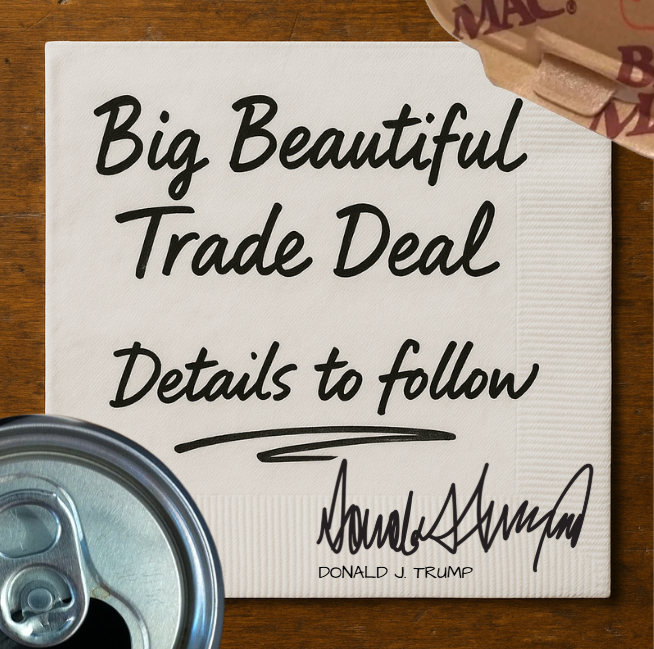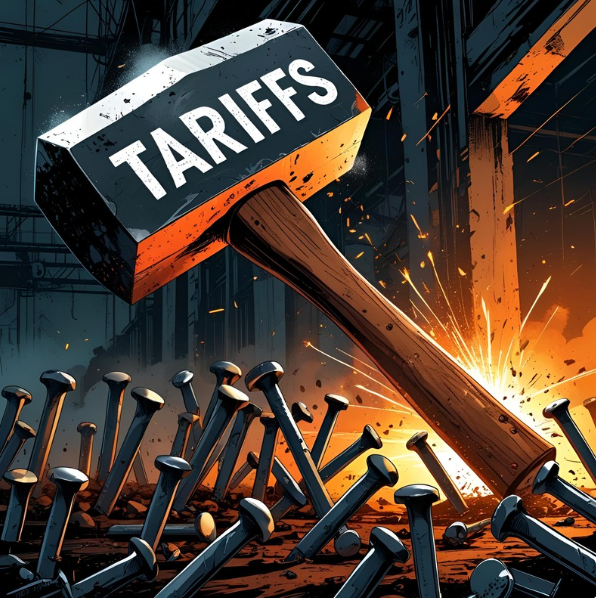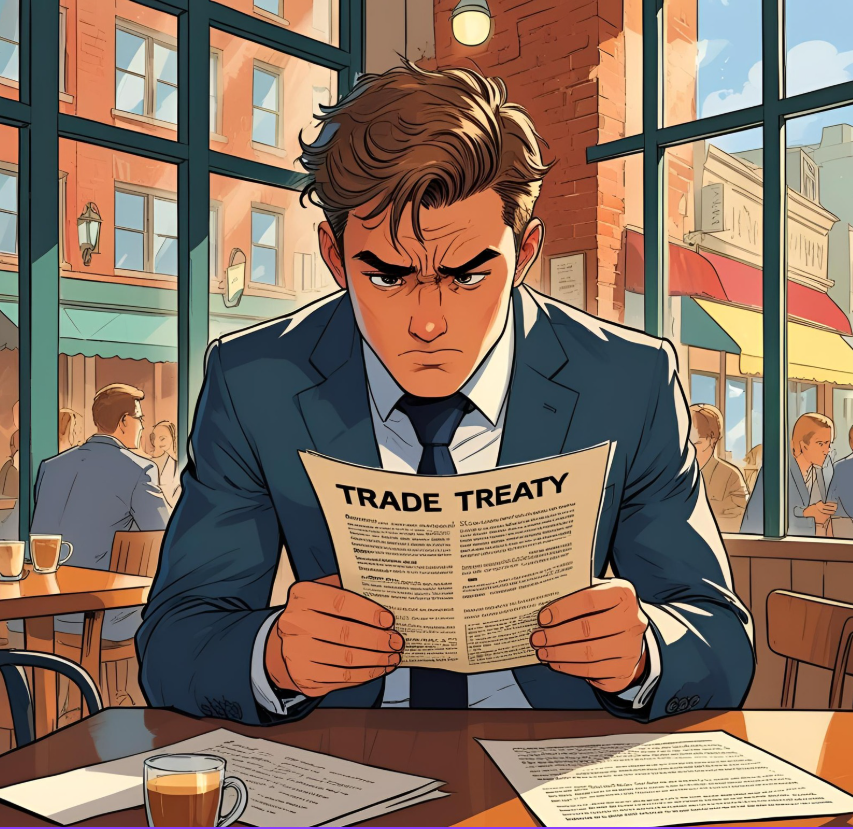In Defense of Napkin Trade Deals
August 22, 2025
Articles
00
min read time
Dmitry Grozoubinski

(Please don't yell at me)
There has been no shortage of criticism leveled at ordinarily sensible, legalistic and methodical actors like the European Union, Japan, and Korea for signing up to ‘napkin deals’ with the US that are so ambiguous and cryptic that I’m considering using them as puzzles in my Dungeons and Dragons campaign.
It’s easy to understand why many are frustrated. The current pattern has seen “agreements” that consist of little more than a few headline commitments on select issues, with everything from which tariffs will be cut to the criteria a product must meet to benefit from them left unspecified or in the "to be negotiated" basket.
This is baffling for business, paralyzing for investment, and leaves plenty of room for everything to fall apart in the negotiating room down the line. Moreover, it often means that despite the triumphant (or at least relieved) tone of the press conference, tariff relief may be months away as Customs and Border Protection continues charging the pre-deal rate until all the details are retroactively finalized.
It’s also a complete reversal of the way trade negotiations traditionally work. Generally, negotiators would hash out all the details except the small handful of tradeoffs so politically sensitive they must be decided at a leader to leader level, and only then would you get principles in a room to see if a deal can be made.
By the time the UK and Australian Prime Ministers sat down, 98% of the Australia-UK FTA was considered closed text, and there were only a handful of big decisions remaining for them to reach agreement on (ie. for Boris Johnson to get rolled on) .
In addition to lowering everyone’s blood pressure, this approach significantly decreases the likelihood that an unexpected impasse emerges in the negotiations after the leaders have met and reached agreement in principle, because the teams have already worked through the whole text and thus know where the big disagreements lurk.
So if napkin deals are so terrible, why are governments doing them?
In the Grim Darkness of the Present, there is only Trump
By all accounts, governments have tried to do negotiations the traditional way. They have sent teams to Washington D.C to meet with US officials. They have welcomed delegations from the USTR, from Treasury and from Commerce in their own capitals. They have negotiated, bargained, haggled over language and even in some cases achieved what looked like landing zones with their US counterparts.
Then President Trump gets on the phone and all of that goes out the window.
As best we can tell looking in from the outside, the US President is not sharing with his negotiators what precisely they must secure to earn his blessing on a final deal. Nor he does not feel beholden to stick to or honor any agreements in principle they have reached on his behalf.
You can’t pre-negotiate the details of a final arrangement if you have no clue what that final arrangement might look like, and if the US officials that are supposed to be negotiating it with you don’t have authority, influence, or insight into the President’s thinking. Even if you do try and pre-negotiate something, there is every chance it doesn’t survive contact with the President and you end up having to either re-negotiate it or to negotiate a range of other details that unexpectedly emerged as a result of the leader to leader talks.
You can’t really begin a negotiation on the details until your leader and Trump have their little sit down or phone call and agree their napkin deal, so you may as well let them get on with it.
The Big Stuff Needs a Fix
A major reason big, serious players are willing to engage with the US on fundamentally unserious negotiations that likely feature 9 words ranting about Obama for every word spoken about market access… is that they really want market access.
A 15% tariff on everything is significantly better than a 25-30% tariff, and if the way to get it is to participate in the pantomime of a negotiation, then so be it. It’s annoying, it lacks dignity, it offers far less clarity than hoped, and it could be reversed at the whim of an unpredictable man... but all that is considered worth it get the big headline offering because the big headline offering matters.
This is doubly true when you remember that advantages in the US market are comparative, not independent. If you tell the US President that you’re not going to down with him to talk about the headline tariff figure until your teams and the USTR spend 8 months hammering out all of the lesser details, but your competitors say they’re cool with a napkin deal next week, then you’re risking them securing much better access into the US. That’s terrifying.
A napkin deal may not be anyone’s dream way out of this problem, but many may consider it preferable to no-deal at all - especially if your major export competitors are hunting for napkins themselves.
We’re All Meme Stocks Now, Baby
In finance, a meme stock is an equity the price of which has become completely decoupled from any fundamentals about the business and is instead driven by virality and hype. While this is generally reserved for specific cases like when something trends on /r/wallstreetbets, it’s kind of a microcosm of the fact that markets aren’t purely rational evaluations of a company’s profit and growth, as they are a measure of sentiment, perception, and fourteen dimensional chess guesswork about what investors think investors think about what investors think.
Governments that find themselves in the crosshairs of the Trump administration’s tariff ire feel immense pressure to send positive signals to market players about their ability to constructively and successfully reach a deal with the US President - even if the actual implementation of the deal may be many months of tough negotiation away.
Doing a napkin deal with Trump signals to markets, investors and bond holders that you’re capable of engaging with the man, capable of doing a deal that at least at the top level mitigates much of the threatened damage, and that the likelihood of further escalation (while never zero) has been substantially reduced in the short term.
Now granted, this might only be a temporary confidence boost. When the earnings reports of your major firms come out months from now, you may discover that the still-unimplemented napkin deal has not in fact saved them from a big revenue hit, that the new paperwork and bureaucratic requirements are pricing them out of competitiveness, or that their supply chains are too exposed to manufacturing in 3rd countries to actually take advantage of the napkin.
All that is possible - but it’s also a problem for future you, and likely a far less headline grabbing or market moving one. For now you’ve got to convince people not to light themselves, your stock market, and your government borrowing costs on fire, and a napkin deal might do that.
Can’t Legal the Bald Eagle
An entirely rational counter-argument to the proliferation of napkin deals is that they offer very little legal certainty about what either side agreed to. Weeks after the EU-US deal, and following hundreds of hours of negotiations, the two sides still haven’t arrived at anything either of them is willing to refer to as a legal text - only a joint communique.
When nothing is written down, or things are written down in a conversational and not legally-binding manner, then one could argue there’s no actual certainty about what will be implemented and how long it will last. The US could simply walk back what their partners thought was a locked in offer, or render it meaningless through the subsequent imposition of conditions.
The problem is, this is absolutely still the case whether you write anything down or not. The Trump administration simply does not prioritize fidelity to legal texts as highly as its partners would like. If President Trump woke up one morning and decided that the US really needed a 40% tariff on EU automobiles, the linguistic legal rigor and formality status of the US-EU communique would not be a major factor in whether he acted on that impulse.
The US under the Trump administration does not share the negotiating approach most countries have used for decades, wherein you make binding commitments in strong legal language in areas you’re sure you won’t be violating and soft or no commitments in areas where you think a derogation is likely. They are vibe coding international relations, and we’re all just caught trying to navigate the resulting spaghetti code.
Final Thoughts
I don’t like napkin deals, and I don’t think you should either, but I do understand why governments are signing them.
I keep coming back, again and again, to the fact that there are no good options here. The choices governments are facing are not between napkin deals and 430 page, WTO-compliant, rigorously negotiated free trade agreements, but between napkin deals and tariffs at 30 per cent or higher.
In the absence of anyone they can credibly negotiate with before Trump, and given the man is hardly likely to deep dive into the Rules of Origin rules in a ninety minute face to face with your leader, governments are taking the napkin and hoping to build from there.
I have no shortage of sympathy for those who argue that they should instead push back, fight for the principle or defend the rules based order - but I do wonder how many of those yelling this loudest work in an export dependent factory or govern a district full of them.
Principles are great, but sometimes a napkin’s all you’ve got.
More from me:
- Book: Why Politicians Lie About Trade
- Public Speaking (CWG Speakers)
- Trade and Geopolitics Consultancy (Aurora Macro Strategies)





